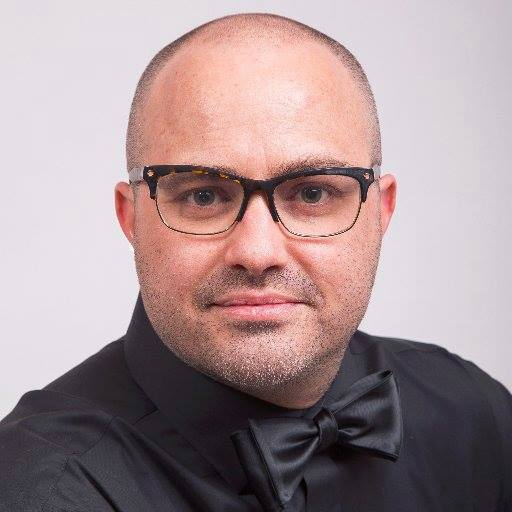IOTA Market Research
Summary
This unique cryptocurrency was designed with the future in mind. In a world where devices and machines are increasingly connected to the internet and to each other, IOTA aims to be the central currency for the digital age. The technology underpinning this currency is truly unique. Unlike blockchain, which gets slower the more the network grows, IOTA’s tangle system is designed to perform faster with increased usage.
All information is valid as of September 24th, 2019. All feedback is welcome.
Basic Statistics
- Cryptoasset type: Cryptocurrency
- Maximum Supply: 2,779,530,283 MIOTA *
- Current Circulating Supply: 2,779,530,283 MIOTA *
- Market Capitalization: $787 million
- Token Economics: Stable Asset
-
-
- There is no mining of new coins and no burn rate. The circulating supply is thus stable. So, no inflation or deflation. Thus, increased network usage should directly increase total demand for the tokens.
-
- Protocol: Tangle
* 1 MIOTA is equal to 1 million IOTA and is the unit of measure typically used when discussing the price of the currency.
History
IOTA came to life in 2015 with the goal of introducing a scalable alternative to existing blockchains with a special focus on its application to the Internet of Things. A total value of around 1,500 BTC (worth about $400,000 at the time) was raised in an ICO, one of the first in the cryptocurrency industry in a time when ICOs only raised a fraction of the amounts they currently generate.
Since the currency does not require mining, a fixed supply of tokens was created. The project went through extensive development and testing until 2017 where it finally became a working product with significant external investment. The IOTA Foundation started reaching agreements with important partners, and the project quickly became one of the most prominent ones in the whole cryptocurrency industry, thanks to its special fit for small payments and its innovative use case for the Internet of Things (IoT).
Development Team
Developers David Sønstebø, Sergey Ivancheglo, Dominik Shiner and Sergei Popov are the founders of the IOTA project and they all continue to play an active role in its development.
David Sønstebø is a Norwegian tech entrepreneur with a special focus on distributed ledger technology, IoT and digital identity. As a co-founder of IOTA, he certainly aims to merge these fields of expertise and create a truly groundbreaking platform. He acts as Co-Chairman of the Board of Directors.

Dominik Schiener is an Italian entrepreneur who, after creating his first start-up in the affiliate marketing sector, decided to start investing in the cryptocurrency industry. He is particularly interested in new governance solutions and acts as Co-Chairman of IOTA’s Board of Directors along with David Sønstebø.

Sergey Ivancheglo is another of the founders of the project and member of the Board of Directors. As a developer, he started working on game development, before focusing on blockchain technology, where he was a pioneer in studying Proof-of-Stake solutions and he also founded Nxt, one of the first blockchain projects with a functionality beyond that of a pure currency.

Serguei Popov is the fourth founder of the IOTA project and also a member of the Board of Directors. Hailing from Russia, Serguei is currently a research mathematician at the University of Campinas in Brazil with an expertise on Probability Theory and Stochastic Processes. After discovering crypto and becoming particularly interested in Nxt, Ivancheglo’s first project, the rest of the founders recruited him for their new project for his technical expertise.

Internet-of-Things (IoT)
Internet-of-Things, usually referred to as simply IoT, is a novel concept that typically represents the myriad of vehicles, appliances and other devices that implement sensors and software and exchange data between them and with users of the network.
The number of devices that make up this network keeps increasing at an exponential rate, with new applications in smart homes, communications, infrastructure or manufacturing, among others. The following graph (source) shows the expected growth of the number of connected devices forming the worldwide IoT network in billions.

When these devices are connected and able to exchange data effortlessly, they can truly change their features and how humans interact with them. A simple data exchange between our car and our smart home can start the heating and other components of our home so that they are prepared when we arrive from work. But connections with other cars can improve the safety and efficiency of the transport system. These are just two examples of the thousands or possibly millions of interactions that can take place between currently “isolated” devices that in some cases we cannot even imagine yet.
With sensors, transmitters and actuators becoming much more affordable; and data mining and analysis emerging as one of the leading industries of the last few years, the future of IoT seems extremely bright. If IOTA manages to provide a successful common network for these devices, it will be an essential driver for the smart economy of the future.
Use Cases
IOTA was conceived with microtransactions, Internet-of-Things (IoT), and Artificial Intelligence (AI) as its main areas of application. The founders anticipated that machine-to-machine transactions and communication in the future will not only be common but absolutely necessary for a technology-driven society.
The applications of IoT are almost limitless. A few of them could be:
- City resource management, ranging from public transportation to waste management, can be automatized and optimized using a combination of sensors and an interconnected secure network like IOTA. Several projects in this sector are already operational or under development, some of which use IOTA’s technology. A very interesting example is ElaadNL’s smart car charging stations.
- Communications and Internet connections, particularly for IoT devices, will likely change significantly with respect to how they are today. Smart home applications, from TVs to heating, will constantly exchange data, services and information with other devices and with the outside world, and any necessary transaction can take place automatically on a network like IOTA.
- Manufacturing is another field where IoT can greatly improve the efficiency of the system. Monitoring data during a manufacturing or supply chain can be extremely important to decrease costs and increase the quality of the final product.
While some of these applications (and other similar ones) might not require at a first glance the existence of a token with monetary value, information and services provided can always be offered for a price. The fact that IOTA can offer extremely fast, completely free microtransactions is key for this, since it allows for continuous machine-user and machine-machine transactions. Data, information and services could thus be exchanged effortlessly and with a fair price completely transparent to all parties.
Moreover, it is important to mention the fact that IoT devices currently still pose a lot of questions regarding security and privacy for device to device communication. The IOTA protocol solves this issue by creating a level of privacy and security in an IoT enabled world that is not available today or with centralized systems in the future. If this level of privacy and security is not established, centralized companies can have access and ownership of our data, and risks of our privacy being breached and data being stolen will remain tremendously high. This is why IOTA offers a real added value and will revolutionize the IoT industry as we know it.
Recent & Future Developments
The use case of IOTA has led to several important companies in different industries becoming interested in the project and reaching agreements with the team.
One of the most relevant ones is Volkswagen, the giant German car manufacturer, who has partnered with IOTA to, among other things, power the connections between their smart cars and autonomous vehicles. Volkswagen also presented a vision of autonomous cars acting as autonomous agents implementing a payment system powered by IOTA. German car manufacturer Audi is also exploring similar concepts employing IOTA.
The IOTA foundation has also announced a new partnership with Jaguar Land Rover to bring “smart wallet” features and connectivity to the British firm’s vehicles. The new cars will now include ‘smart wallet’ technology, which will rely on IOTA’s Tangle, allowing for “data and value transfer”. This feature will make the vehicles connected and will allow for information and money exchange. Furthermore, the connected vehicles can report accidents, road blocks, potholes and more to city organizations and the appropriate authorities. Thanks to the new technology in place, the whole car fleet will contribute to safety and efficient roads. Moreover, cars will be able to report and communicate to other cars when there is traffic or congestion on the roads, thus creating a network of information and exchange of data. Other cars can then use that information to take a more efficient route, reduce waste and emissions. Lastly, by sharing data, drivers can earn money (most likely in the form of tokens) that can be later used at toll booths, parking lots, charging stations and more. With all this, this partnership between the IOTA foundation and Jaguar is looking to be extremely promising.
German engineering giant Bosch is also heavily invested in IOTA through its venture capital division. Bosch holds the record for the greatest number of European patents for a company, showing how they are at the cutting edge of several industries, including blockchain technology and IoT, one of the pillars of the company in the last few years. The applications of IOTA in the ecosystem of the company are almost limitless, and will be unveiled as the partnership advances.
The community is also developing a myriad of projects that are constantly updated in the following website. Some interesting examples include:
- ElaadNL released on April 2018 the first electric car charging station fully powered by IOTA and allowing for machine-to-machine exchanges in a completely autonomous way.
- Fognet is a decentralized router concept where network access is shared among laptops and other devices in a certain area, using a Bluetooth mesh and the IOTA ledger.
-
- The Taipei City Hall has implemented a network of IoT sensors powered by IOTA in their waste bins to automate waste management and make it more efficient.
- Topocare is aiming to implement a flood protection infrastructure using IOTA to monitor and prevent possible flooding, creating a secure and automatic Tangle-based network.
Most recently, the IOTA foundation announced an upgrade to their network with the introduction of Coordicide. It will replace the security system currently in place on their proprietary network. IOTA was relying on a “Coordinator” for security purposes prior to that. The issue was that it was not considered to be decentralized by cryptocurrency analysts and experts. For this reason, the IOTA non-profit foundation was heavily criticized and knew it had to deliver on the promise to truly make their network decentralized. The new system, Coordicide, will be completely decentralized, modular, and flexible. It will rely on consensus and peer-to-peer verification systems. According to the foundation, thanks to this upgrade “IOTA will be the first DLT to solve three fundamental problems with blockchain technology: high fees, scaling and centralization.” The upgrade date has not yet been announced.
IOTA is also working towards positioning themselves as a traditional and digital infrastructure technology company. This represents a tremendous opportunity for the company and investors alike. The digital infrastructure technology industry is a multi-billion dollar industry and market and IOTA intends to become a major actor of it with its smart city initiatives, government cooperation and upcoming infrastructure partnerships. IOTA is working on useful crypto projects with real objectives.
Furthermore, standardization is another one of the major improvements that IOTA is strongly trying to push for. The company is really looking to become an IOT standard and is one of the only protocols that is working with established standards bodies to do so. By achieving this, IOTA will have a significant advantage and edge when it comes to the competition with other actors within the industry.
The Tangle (Technical Description)
Unlike most cryptocurrencies, IOTA network is not technically a blockchain, since blocks and transactions are not connected sequentially but rather in a sort of net where transactions can be attached to several other blocks. This mechanism is called a tangle. (The following GitHub page presents a visual of how transactions progress through the network. In reality, IOTA is not a blockchain but a Directed Acyclic Graph, DAG.

In a nutshell, a user that wants to introduce a new transaction in the network will have to verify two “tips” (previous unverified transactions) by checking their Proof-of-Work signature and that they are not in violation with other previous transactions. Any double spending of coins can be quickly be discovered once it moves further down the tangle.
When this process repeats itself, transactions get verified by an exponentially increasing number of new transactions, and quickly become absolutely verified and “set in stone”. The validation of the network is therefore collective, since a user only needs to validate the two tips transactions and their parents. This is both extremely fast and extremely secure, and conforms the main advantage of the system.
The consensus algorithm is technically more complicated, including the possibility of offline tangles among other things, but the description above provides a simple yet complete explanation of the concept behind IOTA’s revolutionary algorithm.
A very important difference between IOTA and virtually any other blockchain-based concept is that the performance actually increases with the number of users, since more people validate unconfirmed tips. This theoretically solves the problem of scalability, a very important issue with Bitcoin, Ethereum and other cryptocurrencies.
We can compare two other blockchain-free cryptocurrencies, CyberVein and Obyte, to IOTA. CyberVein is similar to IOTA in the way it works and in its concept. CyberVein allows for the decentralized management of databases on the blockchain. The Proof of Contribution system works with users giving disk space in exchange for tokens. Obyte is also similar to IOTA in the way it operates. It allows its users to create smart contracts and effective payment systems on their own proprietary blockchain. It is secure and also enables users to create dApps. However, IOTA remains the most robust and most advanced project amongst all the blockchain-free, DAG, cryptocurrencies.
In the scheme of a traditional blockchain, which can be thought of as a chain where the current block validates the previous, the order in which transactions are validated is essential. This is not the case for the Tangle, where the order is not relevant at all, and only the current state of balances in all the addresses needs to be verified. Storing transactions in a specific order is an important bottleneck for traditional consensus methods, and the Tangle should greatly improve scalability thanks to this.
The community is also working on new functionalities of the Tangle. A fantastic example is how Tanglefy, an e-commerce based on IOTA’s Tangle, is developing a gateway to be able to split transactions to more than one recipient.
Possibly due to its rise in popularity, IOTA has been subject to some criticism and some potential issues have been mentioned often online. An important one is the presumed vulnerability to attacks and theft because of the hash function Curl. While this vulnerability is acknowledged, IOTA no longer uses this hash function since August 2017, and development is still ongoing on the Curl function to make it cryptographically secure. A detailed explanation of this problem is provided in the following Medium post.
Further criticism relies on the figure of the “Coordinator” in the IOTA network. As of now, all of the Tangle nodes are rooted through a Coordinator node which is run by the IOTA Foundation. Although the goal of this node is to prevent 33% attacks to the network, it also introduces a significant degree of centralization, which has been greatly criticized by the cryptocurrency community. The coordinator node is however scheduled to be an only temporary measure while the Tangle is developed and becomes resilient enough in an independent manner. It is not clear yet how or when the transition to a purely decentralized Tangle will occur. This way of operating is not uncommon in the history of the blockchains and within the cryptocurrency industry. Some companies have started some of their operations as centralized and have transitioned to decentralized later. Bitcoin had a process similar to the one of IOTA’s coordinator to check for malicious transactions until the system was robust and secure enough to become completely decentralized.
In addition, there is criticism because IOTA transactions do not have fees, meaning that the participating nodes will not get paid when validating them. Therefore, this gives no further incentive to actively participate on the network.
It is important to understand that IOTA uses a ternary numeral system (consisting of -1, 0 and 1) as opposed to the classical binary system (0’s and 1’s) that virtually all existing computing hardware uses. While there are some technical advantages of using a ternary system, this means that running IOTA in a normal computer requires emulation of a ternary system, worsening the efficiency of the software, and also that existing computational solutions for classical binary systems cannot be used and alternatives need to be developed.
Snapshots are another functionality of IOTA that has received some criticism. These occur periodically to limit the size of the Tangle, and basically erase all history of previous transactions, while keeping the balances of all addresses intact. This is an important change when compared to immutable ledgers like most existing blockchains.
In sum, it should be taken into account that IOTA is still in development and is not a finalized project, something that is acknowledged by the development team itself. Besides, the project includes many significant differences and developments with respect to virtually any other cryptocurrency, and while some of them are very promising it is important to see how they function when the product is fully operational.
Lastly, transactions can be lost on the network if the parties involved don’t promote their transactions. This has become a real issue because it means transactions can take hours or even days to get confirmed. The network is filled with a lot of zero-value transactions, which can get prioritized over other, more consequent transactions. This is an issue that IOTA should address.
Investment Risks
Trading cryptocurrencies can potentially be very profitable as seen in the past, but it is also a very challenging activity that can carry a significant level of risk. Cryptocurrency markets are associated with high volatility, and IOTA is no exception.
It is important to carefully assess your investment goals, methodology and level of experience before deciding to start investing in a new market. It is also extremely important to diversify and view cryptocurrency as an additional element of your portfolio. Given the high risk associated with this type of asset, it is recommended not to allocate more than 20% of your portfolio into cryptocurrencies. Given that the possibility to lose a part or even all the money invested exists, it is extremely important to invest only money that you can afford to lose.
In any case, all the information presented in this Market Report does not constitute financial advice, and introduces no obligation or recommendations for action.
Resources
- Official Website
- IOTA Academic Papers
- Video: IOTA – Is it useful?
- Tangle Graphical Explanation (GitHub)
- IOTA Ecosystem
- Visual representation of the Tangle
- IOTA – 100 Billion Reasons Why
- Coordicide Website
Disclaimer
Cryptocurrencies are not regulated. You will not benefit from the protections available to clients receiving regulated investment services. The content is intended for educational purposes only and should not be considered as investment advice. Your capital is at risk. eToro’s officers, directors or employees may own or have positions in investments mentioned. Past performance is not an indication of future results.
Opinions, interpretations and conclusions represent our judgement as of this date and are subject to change. The information and opinions contained in this document are based on sources believed by eToro to be reliable. No guarantees or warranties are made to its accuracy, completeness or suitability for any purpose. This document is supplied solely for your information and may not be re-produced, redistributed or passed to any other person or published in whole or in part for any purpose.
Any price or investment predictions, analysis, and/or advice contained in this report is not endorsed by the IOTA Foundation, and is not a reflection of any public or private communications from the IOTA Foundation.
Contact Us
Corporate Accounts: corporate@etoro.com
Affiliate Marketing: https://www.etoropartners.com/
Public Relations: PR@eToro.com
Customer Support: https://etoroprod.wpengine.com/customer-service/
eToro By Regions
Iqbal Gandham
UK Managing Director
Jasper Lee
South East Asia Managing Director
Guy Hirsch
United States Managing Director
George Verbitsky
Russia & CIS Managing Director
Robert Francis
Australia Managing Director
Elie Edry
French & LatAm Regional Manager
Emanuela Manor
Italian Regional Manager
Dennis Austinat
Germany Regional Manager
George Naddaf
Arabic Regional Manager
Yael Moscovitch
ROW Regional Manager
eToroX Crypto Exchange: Info@etorox.com
We’re hiring!!! Come see which positions are available at: etoroprod.wpengine.com/about/careers/

